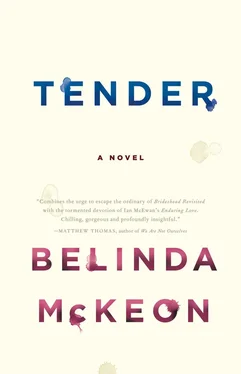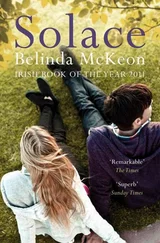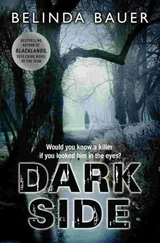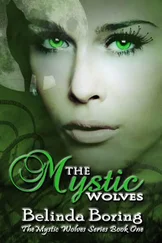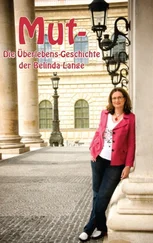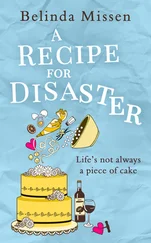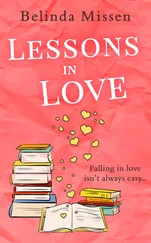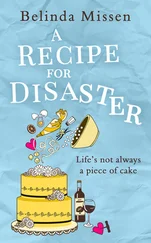Gelatin Silver Print, 1998
178 x 120cm
Untitled
Gelatin Silver Print, 1998
178 x 120cm
Untitled
Gelatin Silver Print, 1998
178 x 120cm
Liam was the larger portrait. Liam: not the portrait of him that Lisa had expected as the centerpiece, but a newer portrait, and a starker one. The Irish Times review a few days later described how people at the opening had crowded around the portrait; how they had asked whether anything was known of its subject; whether he had recovered; whether he would be OK.
But then people had probably wondered that about all seven of the portraits, Catherine thought, about all seven of the subjects: about the three other men, one of them very elderly, staring gravely at the camera; about the three women, one of them pregnant, one of them crying, the tears glistening on her face.
The series was titled simply Omagh, and it was shown in its entirety at the show on John Street, a month and four days after the bombing. Which was too soon, some people said, especially given that most of the subjects were either still in the hospital where James had photographed them, or only recently discharged. Not to mention that so many others had never even made it to a hospital bed.
But James would not care for what people said, Catherine knew. James, she knew, would be very, very clear about what he was doing with the photographs, and why.
James. Who had escaped injury. Who had escaped worse. Who had separated from Liam for half an hour that afternoon to go to a camera shop on the other side of town, leaving Liam to run an errand for his mother. Milk, it had been. Just milk. To buy the milk, he had headed for a supermarket down the town, taking his time in getting there, calling in to the record shop on the way, to the bookshop, to the shop where, occasionally, they had in some decent-looking jeans. But what did any of this detail matter? Liam gave it to a journalist a few weeks later — the journalist, in fact, who had been at the party for Ed Dunne — and the journalist, writing a story on James’s show, had worked the details up into a narrative stark and unsettling in its simplicity, in the simplicity of a twenty-year-old man going out, on a Saturday, to buy his mother a carton of milk—
What did any of the details matter? A red Vauxhall, a Cavalier, the explosives packed into it like things needed for a trip. The number plates changed; the two men who had parked it gone, long gone, and the warnings phoned in to three different places, so that the overall effect was one of confusion — deliberately, accidentally, who knew? Who would differentiate? It was half past two on a Saturday afternoon. Liam was already on Market Street, weaving through the crowds of shoppers and tourists, when the evacuations began, when the police began cordoning people into the area, people who were complaining, but not particularly worried; laughing and chatting, many of them. Long grown used to this kind of drill: the threat, the scare, the all-clear shortly afterwards, the afternoon interrupted and the groceries yet to be bought.
Ten past three.
And for a few seconds after the explosion, said the next day’s newspapers, there was a silence, a frozen, disbelieving silence.
And then the screaming.
* * *
James, on the other side of the cordons, frowning down towards the other end of town, asking people around him if they knew any more than he did.
And then the noise of it. A noise like nothing he had ever heard before, he told the journalist, but a noise, still, that he could not but recognize. Not like a thunderclap, no, no. Nothing like a thunderclap.
What had it sounded like? It had sounded like the thing that it had been.
And then the silence.
And then the screaming. Except that James described it as wailing. James described it as wailing that rose from the streets in front of him and climbed, twisting and growing, into the blackened, burned air.
* * *
(Although maybe that had been the description of the journalist. The journalist who so loved the look of her own words; so loved the shapes they made, the rhythms of them.)
* * *
Catherine was not at the opening. Catherine knew that it was not her place to be there.
But she went to see the photographs, the next day, when the gallery — not even a gallery, just the stripped-down floor of what had until recently been a shoe factory — was quiet, when the only other person there was the attendant, a girl her own age, who did not give her a second glance.
After the reviews began to come, the gallery would not be quiet anymore. But on that day, it was just Catherine, and just the attendant, and then the attendant slipped out, and it was just Catherine, and just what James had seen. What James had understood.
They were the photographs which made his name.
Astonishing piece, isn’t it?” said the gallery assistant, thin as a hat stand and with the face of a John Currin child, as she joined Catherine in front of the new Zhu Wang. The piece was enormous, its thickly sludged canvas taking up almost the entire back wall of the Lewis booth, and it was astonishing, all right, but for all the worst possible reasons: its gimmickry, its sloppiness, and the artist’s very obvious hunger to be done with it so that he could move on to its equally high-earning successor. Catherine shook her head slowly, to suggest that words could not suffice in the face of such artistry, and let her gaze scan them again, the red and scarlet clumps of oil paint, the rusted nails pressed into them like twigs crushed underfoot.
“It’s really a masterful one of Zhu’s,” the gallery assistant said. She was straining, Catherine knew, to read the laminated name tag hiding itself between Catherine’s jacket lapels; though it was the second afternoon of the fair and the grabbing and slavering of the big collectors was therefore over with, still Catherine — well-dressed, passably well-groomed — could be somebody it was important to greet — as the girl, finally making out the dangling name and affiliation, realized that Catherine indeed was.
“Oh my goodness, you’re Catherine from Frieze ?” she said, and her smile took on its full Manhattan wattage — although they were not in Manhattan, actually; they were on a small island to the east of Manhattan, Randall’s Island, which, because it had space for the giant marquee, had been chosen as a site for the first New York edition of the Frieze fair. “It’s so good to meet you! I really want to come to your criticism panel later! I’m Ashley — I work with—”
“Nice to meet you too,” Catherine said, extending a hand. “We’re all so glad the gallery could be part of our first New York fair.”
This was disingenuous, and both women knew it; even the uncovering of a forgery operation in Nate Lewis’s back rooms would scarcely have been enough to block his gallery’s participation in the fair. As soon as it had been decided that there would be a Frieze fair here, it was assumed that Lewis would not only take part but would be assigned one of the most prominent booths; today, Catherine had spotted the Wang as soon as she had walked through the huge tent’s glass doors. The other pieces in the booth were also by big-name Lewis artists: the Lucas Borga dot drawings, the long, low marble Falken, the Michael Woyzcuk metal frames with the stones suspended in them like mutated bell tongues. There was a piece from the Wittenborn archive, and a very delicate, actually quite beautiful little Clara Long, and in the middle of the space, on a pedestal, a yellow Meccano structure which revealed itself, as Catherine came closer to it, to be a miniature camera tripod; a small Diana camera had been painted exactly the same yellow — the case, the lens, everything — and was perched atop it.
Читать дальше
